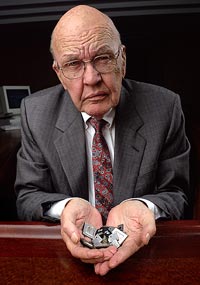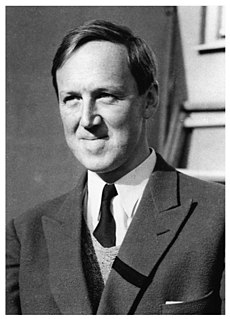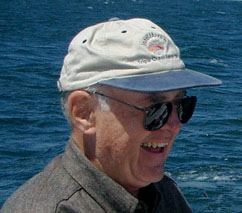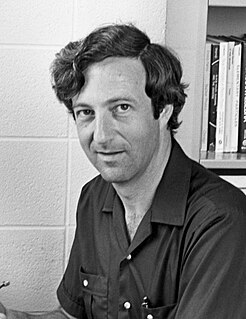Related Research Articles
Speech synthesis is the artificial production of human speech. A computer system used for this purpose is called a speech computer or speech synthesizer, and can be implemented in software or hardware products. A text-to-speech (TTS) system converts normal language text into speech; other systems render symbolic linguistic representations like phonetic transcriptions into speech. The reverse process is speech recognition.

Jack St. Clair Kilby was an American electrical engineer who took part in the realization of the first integrated circuit while working at Texas Instruments (TI) in 1958. He was awarded the Nobel Prize in Physics on December 10, 2000. Kilby was also the co-inventor of the handheld calculator and the thermal printer, for which he had the patents. He also had patents for seven other inventions.

Hannes Olof Gösta Alfvén was a Swedish electrical engineer, plasma physicist and winner of the 1970 Nobel Prize in Physics for his work on magnetohydrodynamics (MHD). He described the class of MHD waves now known as Alfvén waves. He was originally trained as an electrical power engineer and later moved to research and teaching in the fields of plasma physics and electrical engineering. Alfvén made many contributions to plasma physics, including theories describing the behavior of aurorae, the Van Allen radiation belts, the effect of magnetic storms on the Earth's magnetic field, the terrestrial magnetosphere, and the dynamics of plasmas in the Milky Way galaxy.

Gordon Earle Moore is an American businessman, engineer, and the co-founder and chairman emeritus of Intel Corporation. He is also the author of Moore's law.

Saul Arno Teukolsky is a theoretical astrophysicist and a professor of Physics and Astronomy at Caltech and Cornell University. His major research interests include general relativity, relativistic astrophysics, and computational astrophysics.
Anatol Roshko was a Canadian-born physicist and engineer. He was the Theodore von Kármán Professor of Aeronautics, Emeritus, at the California Institute of Technology, Pasadena, CA.
Carl-Gunne Fälthammar is Professor Emeritus at the Royal Institute of Technology in Stockholm, Sweden, specialising in space and plasma physics in the School of Electrical Engineering. He succeeded Hannes Alfvén as Professor of Plasma Physics in 1975.
Hans Wolfgang Liepmann was an American fluid dynamicist, aerospace scientist and emeritus Theodore von Kármán Professor of Aeronautics at the California Institute of Technology.
ESS Technology Incorporated is a private manufacturer of computer multimedia products, Audio DACs and ADCs based in Fremont, California with R&D centers in Kelowna, BC, Canada and Beijing, China. It was founded by Forrest Mozer in 1983. Robert L. Blair is the CEO and President of the company.
Louis John Lanzerotti is a Distinguished Research Professor of physics in the Center for Solar-Terrestrial Research at New Jersey Institute of Technology (NJIT) in Newark, New Jersey.

Sensory, Inc. is an American company which develops software AI technologies for speech, sound and vision. It is based in Santa Clara, California.

Margaret Galland Kivelson is an American space physicist, planetary scientist, and Distinguished Professor Emerita of Space Physics at the University of California, Los Angeles. From 2010 to the present, concurrent with her appointment at UCLA, Kivelson has been a research scientist and scholar at the University of Michigan. Her primary research interests include the magnetospheres of Earth, Jupiter, and Saturn. Recent research has also focused on Jupiter's Galilean moons. She was the Principal Investigator for the magnetometer on the Galileo Orbiter that acquired data in Jupiter's magnetosphere for eight years and a Co-Investigator on the FGM (magnetometer) of the earth-orbiting NASA-ESA Cluster mission. She is actively involved as a Co-Investigator on NASA's Themis mission, the magnetometer Team Leader for NASA's Europa Clipper Mission, as a member of the Cassini magnetometer team, and as a participant in the magnetometer team for the European JUICE mission to Jupiter. Kivelson has published over 350 research papers and is co-editor of a widely used textbook on space physics.

David John McComas is an American space plasma physicist, Vice President for Princeton Plasma Physics Laboratory, and Professor of Astrophysical Sciences and leads the Space Physics at Princeton Group at Princeton University. He had been Assistant Vice President for Space Science and Engineering at the Southwest Research Institute, Adjoint Professor of Physics at the University of Texas at San Antonio (UTSA), and was the founding director of the Center for Space Science and Exploration at Los Alamos National Laboratory. He is noted for his extensive accomplishments in experimental space plasma physics, including leading instruments and missions to study the heliosphere and solar wind: IMAP, IBEX, TWINS, Ulysses/SWOOPS, ACE/SWEPAM, and Parker Solar Probe. He received the 2014 COSPAR Space Science Award and the NASA Exceptional Public Service Medal.
Johannes Weertman was an American materials scientist and geophysicist.
Miklos Porkolab (born March 24, 1939) is a Hungarian-American physicist specializing in plasma physics.
Kunioki Mima is a Japanese plasma physicist. He is known for his contributions to the theory of turbulent transport in plasmas, and in particular the derivation of the Hasegawa–Mima equation in 1977, which won him the 2011 Hannes Alfvén Prize.
Patrick Henry Diamond is an American theoretical plasma physicist. He is currently a professor at the University of California, San Diego, and a director of the Fusion Theory Institute at the National Fusion Research Institute in Daejeon, South Korea, where the KSTAR Tokamak is operated.
Annick Gabrielle Pouquet is a computational plasma physicist specializing in plasma turbulence. She was awarded the 2020 Hannes Alfvén Prize for "fundamental contributions to quantifying energy transfer in magneto-fluid turbulence". She currently holds positions in the Laboratory for Atmospheric and Space Physics and National Center for Atmospheric Research at the University of Colorado Boulder.
Malcolm Golby Haines was a British plasma physicist known for his research on Z-pinches. He was a Fellow of the American Physical Society and was co-awarded the 2005 Hannes Alfvén Prize.
Mary Hudson is the Eleanor and Kelvin Smith Distinguished Professor of Physics at Dartmouth College. She is known for her research on the weather patterns that occur due to solar eruptions. She was elected a fellow of the American Geophysical Union in 1984.
References
- ↑ "CLUSTER mission" . Retrieved 2008-11-08.
- ↑ "NASA's Polar Mission" . Retrieved 2010-10-13.
- ↑ "Forrest Mozer publications" . Retrieved 2008-10-05.
- ↑ "John Simon Guggenheim Foundation | Forrest S. Mozer" . Retrieved 2021-07-03.
- ↑ "UCB Distinguished teaching awards" . Retrieved 2008-10-05.
- ↑ "Hannes Alfven Medal". Archived from the original on 2011-07-18. Retrieved 2008-10-05.
- ↑ "Mozer". Honors Program. Retrieved 2021-07-03.
- ↑ "APS Fellow Archive". www.aps.org. Retrieved 2021-07-03.
- ↑ "Forrest S. Mozer". Honors Program. Retrieved 2021-07-03.
- ↑ US #4,214,125
- ↑ "Sensory, Inc".
- ↑ Droege, Joerg. "Skype Video Interview of Forrest S. Mozer". Scene World Magazine. Retrieved 2016-11-18.